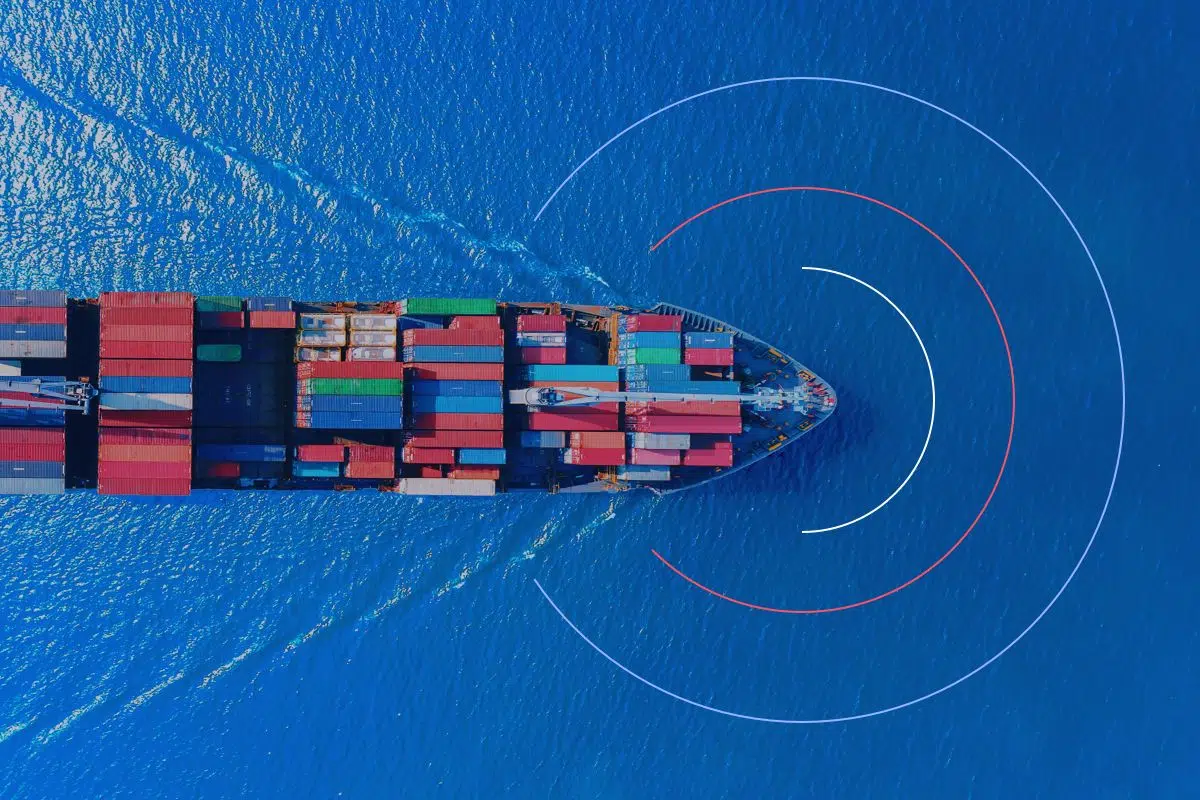In the maritime industry, degrees of autonomy represent the level of technological involvement in shipping operations, ranging from manual control to full autonomy. This progression signifies significant technological advancements, such as the transition from manual navigation to partial autonomy systems like autopilot, with the adoption of autonomous vessel navigation systems. However, the concept of autonomy degrees is a nuanced continuum with different shades of autonomy, and each step towards higher autonomy involves substantial developments in AI and machine learning capabilities, ultimately leading to more efficient, safer, and environmentally friendly shipping practices.
When analyzing the current industry discourse regarding degrees of autonomy in shipping, it is evident that vague and unclear definitions pose a significant challenge. There are no universally accepted boundaries separating these degrees of autonomy, and the lines are often blurred, with different interpretations existing among industry stakeholders. While some classification societies identify as few as four degrees of autonomy, others break it down into as many as seven, and some include considerations of digitalized capabilities while others address ship-to-shore connectivity. Therefore, harmonization of taxonomy definitions and regulatory updates is critical to appropriately reflect the nuances of autonomous navigation in the maritime industry.
The current classification landscape
The International Maritime Organization (IMO) was the pioneer in conceptualizing the ‘degrees’ of autonomy for ships:
| Autonomy level | Seafarers onboard | Vessel remotely controlled | Real-time connectivity required |
|---|---|---|---|
| Ships with automated processes and decision support | Yes | No | Not necessarily, depending on the extent of automation and decision support systems. |
| Remotely controlled ship with seafarers on board | Yes | Yes | Yes, to facilitate communication between onboard personnel and remote operators. |
| Remotely controlled ships without seafarers on board | No | Yes | Yes, for continuous communication and control of the vessel from a remote location. |
| Fully autonomous ships | No | No | Not necessarily, vessel itself operates independently without the need for direct human intervention. |
The Lloyd’s Register (LR) framework reinforces this continuum by defining autonomy as a capability rather than a static system. At the higher end of autonomy (IMO Degree 4), ships are capable of making and executing decisions independently. However, LR emphasizes that even highly autonomous systems require integration with human oversight, especially through Remote Operation Centres (ROCs), and clear Operational Design Domains (ODDs) that define the specific conditions in which these vessels can safely function.
The distinction between IMO’s definition and those of classification societies such as DNV, Lloyd’s Register (LR), Bureau Veritas (BV) and OneSea lies in their approach to categorizing levels of autonomy in ship operations.
DNV:
DNV’s scale focuses on providing clarity on the extent of reliance on automated systems for decision-making, categorizing functions based on whether they are manually operated, system decision-supported, or fully autonomous.
Bureau Veritas
BV’s scale introduces additional degrees, such as human-directed and human-delegated systems blending human and automated decision-making, presenting a more nuanced perspective on autonomy levels (while DNV and LR scales generally progress from manual control to full automation).
One Sea
One Sea’s taxonomy uniquely distinguishes between autonomous and remote-controlled operations, emphasizing that human operator location doesn’t solely dictate the taxonomy of automation and autonomy. It highlights cognitive and sensory human involvement through elements like ‘hands-on/off,’ ‘eyes on/off,’ and ‘mind on/off’.
Lloyd’s Register
LR’s scale offers a more detailed breakdown, with seven defined autonomy degrees, which encompass variations in decision support and levels of human supervision, allowing for a nuanced understanding of autonomy levels.
- Manual Control (Level 0)
- All decisions and vessel operations are made by human crew onboard.
- No automation beyond basic control systems.
- Decision Support (Level 1)
- Systems assist human decision-making (e.g., navigation aids, collision alerts).
- The crew is fully in control, but receives automated guidance.
- Onboard Automated Operations (Level 2)
- Automation can carry out specific tasks (e.g., autopilot, route tracking).
- Human crew monitors and can override system at any time.
- Onboard Supervised Autonomy (Level 3)
- Autonomous systems perform functions with crew oversight onboard.
- Crew can intervene if needed; supervision is local.
- Remote Supervision with Crew Onboard (Level 4)
- Vessel can be operated remotely with crew onboard as backup.
- Remote centers may handle routing or system alerts; crew can take control.
- Remote Control without Crew (Level 5)
- Full vessel operation handled remotely; no onboard crew.
- Remote Operation Centres (ROCs) are fully responsible for navigation and control.
- Full Autonomy (Level 6)
- Vessel is capable of navigating, making decisions, and operating without human input or remote supervision.
- AI-driven systems manage all scenarios including emergency response within a defined Operational Design Domain (ODD).
Core Requirements for MASS Deployment
Successful implementation of Maritime Autonomous Surface Ships (MASS) necessitates several foundational components:
- Sensor and AI Integration: Advanced situational awareness systems incorporating radar, cameras, lidar, and machine learning algorithms are essential for navigation and collision avoidance. These technologies enable ships to detect and classify other vessels, assess environmental conditions, and respond accordingly.
- Operational Design Domain (ODD): MASS must operate within clearly defined boundaries that specify acceptable weather, visibility, geography, and traffic conditions. This is essential to ensure safety and to identify when human intervention is necessary.
- Remote Operation Centres (ROCs): As ships become less reliant on onboard crew, new facilities are needed to monitor and control vessels remotely. These centers require dedicated training programs, secure communications infrastructure, and protocols to manage vessel behavior across time zones and jurisdictions.
- Legal and Regulatory Frameworks: Key maritime conventions such as COLREGs (collision rules), STCW (training and watchkeeping standards), and SOLAS (safety at sea) must be updated to reflect the capabilities and liabilities associated with autonomous systems.
- Training and Competence Models: MASS introduces new human roles, particularly in remote monitoring and system oversight. New competency frameworks are required to ensure personnel can effectively manage autonomous operations and respond to edge-case scenarios.
- Assurance and Certification: Regulators and stakeholders need rigorous, evidence-based assurance that MASS can perform reliably under a wide range of operating conditions. Digital and physical testing environments, including regulatory sandboxes, will be essential for verifying system integrity and safety.
The Need for Clarity Around Degrees of Autonomy
The adoption of maritime autonomous navigation systems in shipping highlights the critical need for a clear understanding of autonomy levels within the sector. This shared understanding is vital not just for better communication, it also fosters collaboration among stakeholders like regulatory bodies, insurers, shipbuilders, and operators, through a standardized language that mitigates misunderstandings and promotes effective discussions.
Recognizing the different degrees of autonomy helps industry participants identify potential risks at each level, aiding in the creation of efficient risk management strategies and ensuring the safety of maritime operations. Additionally, defining autonomy levels encourages innovation by offering a roadmap for technological advancements, thereby improving operational efficiency and safety. Providing clarity on regulatory requirements and expectations allows for smoother integration of autonomous technologies into shipping practices, reducing time to market.
Accurate definitions of autonomy levels are crucial for designing targeted training programs for maritime professionals, preparing them with the skills and knowledge necessary as the industry evolves towards greater autonomy. Such clarity supports companies in regulatory compliance and in optimizing human-machine interactions, moving from decision support systems to complete autonomy. Ultimately, standardizing these definitions is key to the future growth and development of the maritime industry.
The Future of Autonomous Navigation in Shipping
The promise of autonomous navigation in the maritime industry brings visions of safer, more efficient, and environmentally friendly shipping. However, these visions can only become reality if the industry can establish common ground on the definitions for the various degrees of autonomy.
Next steps include:
- Developing training and certification programs for remote operators
- Establishing clear Operational Design Domains (ODDs) for each autonomy level
- Ensuring MASS technologies can handle edge cases and dynamically changing conditions
- Building trust through evidence-based validation in physical and digital sandboxes
Challenges also remain, particularly around the machine interpretation of human-centric regulations such as COLREGs. Terms like “good seamanship” and “safe distance” lack precise definitions, making them difficult to encode in autonomous systems. Legal liability and insurance frameworks are similarly underdeveloped and vary across jurisdictions, presenting a barrier to consistent global deployment.
Situational awareness systems in shipping will continue to evolve, and their applications will become more complex. Therefore, an adaptable framework is needed to accommodate these advancements and interpret their impact on degrees of autonomy. It’s about creating an evolving map that can guide stakeholders in navigating the sea of autonomous technologies as they become more advanced and sophisticated.









